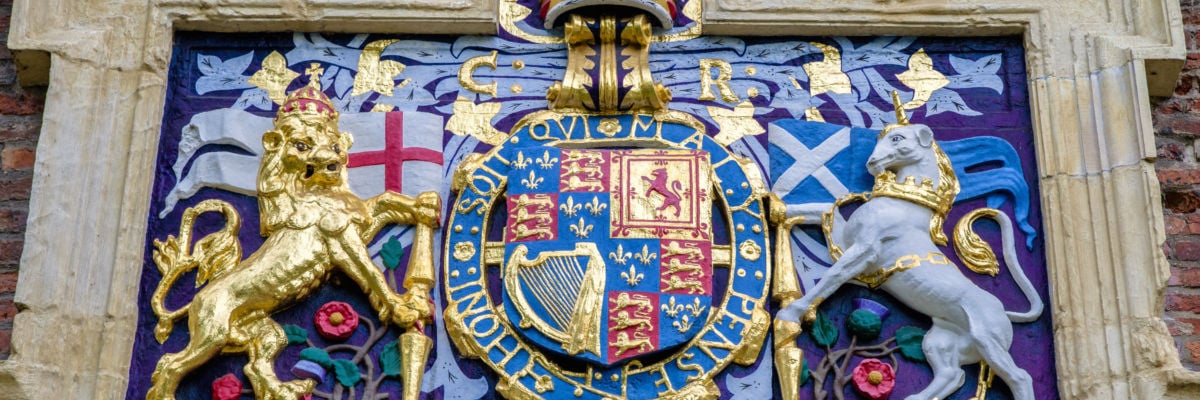
Last week, Jonathan Goodall, a bishop in the Church of England, announced that he would resign his post to seek full communion with the Catholic Church. As Fr. John Hunwicke reminds us, Goodall is not the first bishop of Ebbsfleet to “pope.”
Ebbsfleet is not, after all, an ordinary Anglican diocese. It was set up in 1994 as the seat of one of the “flying bishops” appointed to shepherd traditional Anglicans opposed to the ordination of women. It has deep ties, then, to the “Catholic” or “Anglo-Catholic” wing of Anglicanism, which, in its culture, literature, and theology, looks both to pre-Reformation England and contemporary Catholic practice as much as if not more than the English Reformation. Bishop Andrew Burnham, who served Ebbsfleet from 2000 to 2010, was instrumental in the process that eventually produced the apostolic constitution Anglicanorum coetibus, the ordinariates, and their distinctive “Divine Worship” form of the Roman Rite. Along with his fellow “flying bishop” Keith Newton, Burnham was received into the Catholic Church and ordained to the priesthood. As a former Anglican bishop, he is even granted the title monsignor in recognition of his former ministry.
At this point, it remains to be seen whether Jonathan Goodall will follow suit. But the news of his reception raises several questions for ordinary Catholics. Goodall says, in his public announcement, that saying “yes” to the Catholic Church does not mean saying “no” to what he experienced in the Church of England. What exactly does this mean? Doesn’t the fact that Goodall is leaving his Anglican ministry suggest that in fact he was not, despite his self-description as an Anglican, a “Catholic Christian”?
Goodall’s description of his action may seem strange to some Catholics, but it sounds familiar for those of us in the ordinariates, and indeed for many other Protestants who have found the full communion of the Church. We are, despite the common label, not converts. That designation is more formally used in the Church for those who are unbaptized. Yes, I made a profession of faith and received confirmation; yes, I entered the Church as a layman despite some years of pastoral ministry; so yes, in a way, this was a conversion. But it was part of the lifelong conversion that we all make after baptism. By virtue of baptism, I was, in some sense, already a Catholic Christian, as is anyone who has valid baptism. Otherwise, baptism is not baptism at all. There’s no Catholic baptism or Protestant or Orthodox baptism; there’s just baptism (or not).
Unfortunately, it’s not unusual for Catholics to play into the same misunderstandings and distortions that one finds among Protestants. I grew up, as a Baptist, thinking Catholics were not Christians. Now that I’m Catholic, I’m sometimes shocked to meet students who talk in exactly the same way — “I’m not a Christian; I’m a Catholic.” Don’t get me wrong: there are real and important divisions that remain. But it is not very helpful to treat Protestants coming into the Church as not at all different from Hindus or atheists or Muslims.
Case in point: High church Anglicanism — even Anglican papalism — has long had groups whose theology, liturgy, and practice have closely followed Catholic tradition. This is not universal (hence the difficulty of ecumenical dialogue), but it not all that unusual, either. When I was an Anglican, I routinely looked to the Catechism of the Catholic Church for guidance. I read the Fathers. I read the councils. I read St. Thomas. I got a Ph.D. in medieval historical theology. I celebrated a liturgy very close in its details to the “Mass of the Ages,” and that in its external elements retained far more of Catholic tradition than your typical modern Catholic parish.
In short, I had, like many of my friends, a real encounter with the Catholic faith even while outside the boundaries of the Catholic Church. (Side note: This dramatic disjuncture between my “catholic” Anglican experience and the low church practice in many Catholic parishes is one of the main things that kept me away from the Church for many years.) This is, I think, what Pope Benedict XVI referred to when he celebrated the “gifts” found in Anglicanism that, to use the language of Lumen Gentium, “are forces impelling towards Catholic unity.”
It’s also exactly what Jonathan Goodall is talking about. It is not so much that he looked at Anglicanism and found it deficient. Rather, his time in Anglicanism is itself what brough him to the Catholic faith. It was not something externally imposed, but something present within. That faith has, ultimately, compelled him to full communion—as it compelled me—but this does not mean that his faith is fundamentally changed. I suspect that Goodall, like many of us, has come to the conclusion that the Catholic faith he found in Anglicanism is actually more at home, ultimately, in communion with Rome. Or, as one of my priest friends put it, “I realized that everything I loved most about Anglicanism was actually Catholic.”
Goodall’s “conversion” may be frustrating to certain devotees of modern ecumenism as well as more rigorist traditionalists, both because it calls the bluff on endless “dialogue” without movement (my bishop calls our project “realized ecumenism”) and because it takes for granted the goodness and reality of certain Catholic elements outside the visible bounds of the Church. But this is just the truth. The Church can be neither as “open” nor as “closed” as those on the extremes want it to be. She is a mixed body, and her life involves mystery, not just certainty. I pray that this good bishop’s sacrificial humility will serve as an example to many, both Protestants and Catholics.


